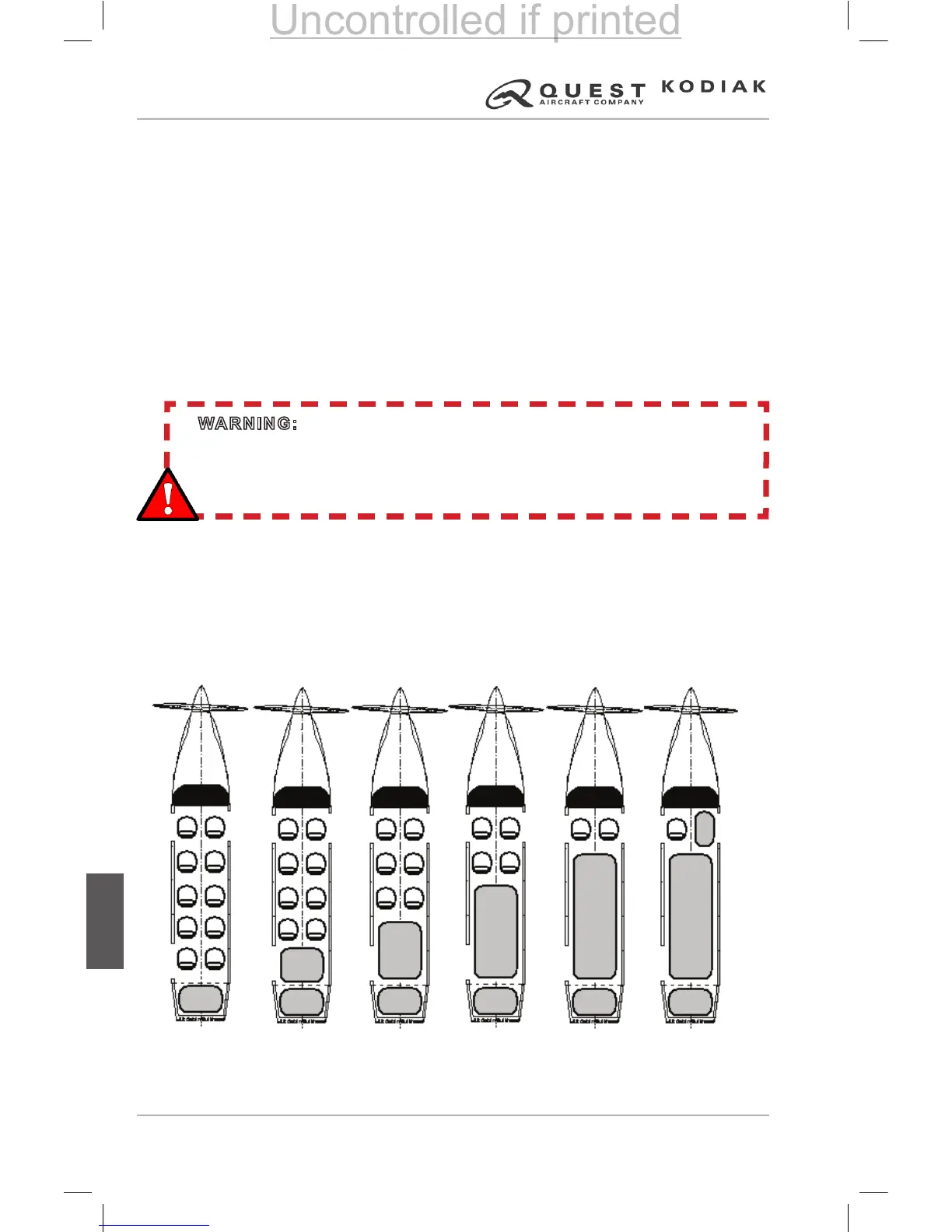CABIN LOADING CONFIGURATIONS
With the exception of the cockpit, each of the six loading zones is equipped
with tie-down points, just behind the forward edge of the zone. The sixth zone
also has tie-down points at the rear of the zone, in the aft cabin bulkhead.
These tie-down points, along with the seat tracks in the oor, allow the
operator to fasten straps to the interior of the fuselage.
Acceptable Loading Congurations
The acceptable loading congurations for the KODIAK are established to
provide occupant safety in ight and allow emergency exiting through both
crew doors and the cargo door. The illustrations below represent different
loading scenarios by showing an overhead view of the fuselage, with grey
areas representing areas where cargo is loaded.
Generally, the rear zone (Zone 6) is not equipped for seats and may be used
for cargo with any seating conguration.
1. When the aircraft is loaded with a combination of cargo and passengers, as
illustrated in the gure below, seats must be removed beginning at the rear
of the cabin to make room for cargo. There must be at least 8″ of clearance
between cargo and the back of seats.
Figure 7-49 – Placement of Cargo Aft of Passengers
WARNING: There may be congurations that are geometrically possible
and allowed as shown in the following illustrations, but care must be taken
to also observe the loading rules regarding strap and tie-down use. It is
likely that the availability of tie-down points will limit the cargo to be carried
- particularly for heavy loads that span multiple zones.
